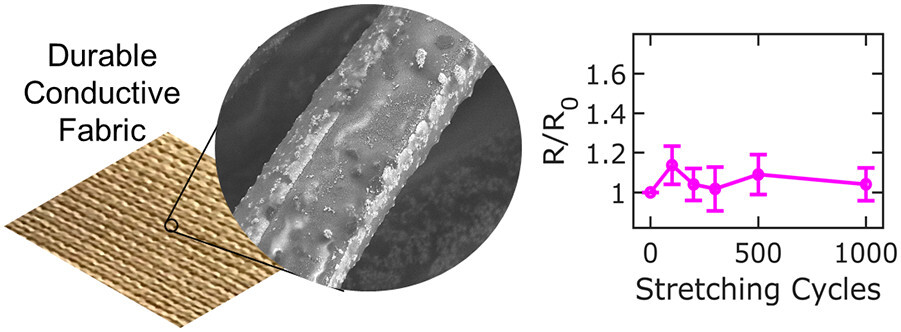Achieving highly conductive, stretchable, and washable fabric from reactive silver ink and increased interfacial adhesion
Published in ACS Applied Polymer Materials, 2022
Abstract
There is a major need to manufacture highly electrically conductive fabrics with stretch- and wash-durability. In this work, we provide both modeling and experiments of the mechanical failure of silver ink coatings on knitted fabric. Large thickness metal films are needed for high conductance but tend to debond from the underlying fabric microfibers, leading to cracking and failure. Strong adhesion between the metal film and microfiber is thus key to achieving high thickness films with good mechanical robustness. The use of a reactive silver ink addresses this need due to in situ silver reduction and conformal coverage. Furthermore, a chemical etchant pretreatment of the textile microfibers functionalizes the surface to enable covalent bonding with the surface and increases the interface area. The use of a polymer provides for an additional protective barrier during washing. Treated fabrics demonstrate low sheet resistance—less than 100 mΩ/sq with only two coats, and less than 200 mΩ/sq after 1000 stretching cycles or 300 min of ultrasonic washing with detergent.

Recommended citation: Galante, Anthony J; Pilsbury, Brady C; Li, Mingxuan; LeMieux, Melbs; Liu, Qihan; Leu, Paul W. (2022). "Achieving highly conductive, stretchable, and washable fabric from reactive silver ink and increased interfacial adhesion." ACS Applied Polymer Materials. 4(7): 5253-5260. https://www.lamp.pitt.edu/Publications/054.pdf
